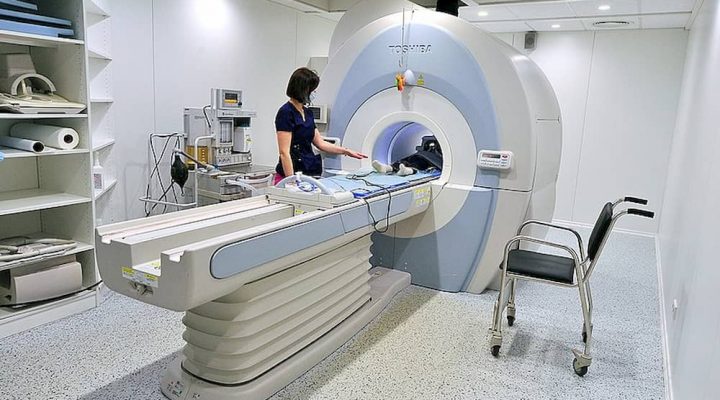Radiology Workers have safety challenges when they perform their duties. They are exposed to a variety of things that make them susceptible to work injuries.
In event they get injured while performing their duties, they would be entitled to file a workers’ compensation claim to collect benefits and receive medical care.
This article will discuss the Radiology Worker Occupation, Industrial Exposures that place them at risk of industrial injury and the mechanisms of injury.
What Are Radiographic Workers?
Radiographic Workers are medical professions. They handle medical imaging of the human body. There are many different technologies that are used to perform such imaging. Imaging studies that that Radiologists can perform Computed Tomography Scan (CT), Magnetic Resonance Imaging (MRI), Nuclear Medicine Imaging (This includes Positron-Emission Tomography (PET)), Ultrasound, and X-Ray.
Some of these imaging studies require the patients to have dyes injected into their bodies to allow for enhanced imaging.
Radiographic Workers can work in both the public and private sections. They can work in hospitals, prisons and other medical facilities.
What Types of Medical Conditions Can Radiology Workers Be Exposed to at Work?
Radiology Workers can sustain industrial injuries to practically all body parts and systems. Radiology Workers are at risk of infectious disease in the workplace. Radiology Workers are at risk of musculoskeletal disorders in the workplace. Occupational Health and Radiation Safety of Radiography Workers Hasna Albander
What is an Infectious Exposure? Are There Different Forms?
Infectious exposure is an exposure that is transmitted from one source into a host. The term host refers to the infected person. Thus, the Radiology Worker becomes the host of the infectious disease. Essentially, these occupational exposures enter the worker’s body and causes illness.
How Many Forms of Infectious Exposures Are There?
There are six forms of Infectious exposure. They are Direct Transmission, Indirect Transmission via Fluids, Indirect Transmission by vectors, Indirect transmission by Vehicles ,Indirect Transmission via Vehicles, Indirect Transmission via Airborne Media, and Indirect Transmission via Droplets. Occupational Health and Radiation Safety of Radiography Workers Hasna Albander
What Is Direct Transmission?
Direct Transmission is when the infectious agent is transmitted by direct contact of the infectious agent from one individual to a susceptible host (worker. CDC) For example, direct transmission can be skin to skin contact.
What Is Indirect Transmission via Fluids?
Indirect Transmission by Fluids. An example of indirect transmission by fluid is urine.
What is Indirect Transmission via Vectors?
Indirect Transmission by Vectors. The term vector essentially refers to insect bites. Examples of transfer by vector would be bites from mosquitos, fleas and ticks.
What is Indirect Transmission via Vehicles?
Indirect Transmission by Vehicles is essentially when an object carries the infection. Examples of vehicles include a number of items such as food, water, biologic products (blood), and fomites (inanimate objects such as handkerchiefs, bedding, or surgical scalpels). CDC.
What is Indirect Transmission by Airborne Media?
Indirect Transmission by Airborne Media is when the agents are suspended in the air. An example of this agents includes dust and droplets that contain microorganisms or spores. CDC
What is indirect Transmission by Droplets?
Indirect Transmission by Droplets is when there is a liquid transmission. Eye, Nose or Mouth fluids are examples of this transmission. Thus, sneezing, coughing and tearing are forms of droplet transmission.
What Types of Illnesses Can Arise from Transmission?
Per the CDC, “[w]orkers in the healthcare industry are also at risk for influenza as well as airborne (such as tuberculosis “[TB]) and percutaneously transmitted (such as HIV) infection from patients” Su CP, de Perio MA, Cummings KJ, McCague AB, Luckhaupt SE, Sweeney MH. Case Investigations of Infectious Diseases Occurring in Workplaces, United States, 2006-2015. Emerg Infect Dis. 2019;25(3):397-405. doi:10.3201/eid2503.180708
What Are Examples of Cumulative Trauma Musculoskeletal Exposures of Radiology Workers?
There are a variety of ways that repetitive trauma musculoskeletal injuries are described in literature. This includes recurrence motion injury, repeated strain and cumulative trauma disorder. Occupational Health and Radiation Safety of Radiography Workers, Hasna Albander
Cumulative Trauma injuries can be specific to the imaging that the worker performs. For example, “[c]omputerized technologists are more likely to experience spinal stress and RSI from intensive keyboard work. Intense keyboard work. RSI keyboard affects CTD ‘s hands and grips. Like tendinitis, carpal and ganglion syndrome. Occupational Health and Radiation Safety of Radiography Workers, Hasna Albander
Sonographers are also at risk for cumulative trauma injuries due to equipment design, low posture, constant transducer pressure, difficult movements, unsatisfactory breaks, and overall stress. Occupational Health and Radiation Safety of Radiography Workers, Hasna Albander
What If I Need Advice?
If you would like a free consultation regarding workers’ compensation, please contact the Law Offices of Edward J. Singer, a Professional Law Corporation. We have been helping people in Central and Southern California deal with their workers’ compensation cases for 27 years. Contact us today for more information.
